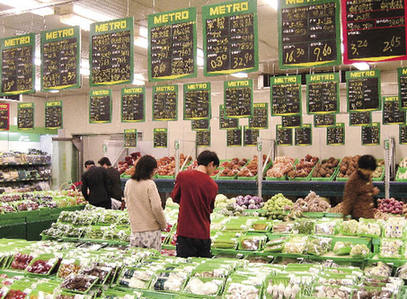|
One interesting phenomenon was the flourishing market for health products in the late 1980s. By 1994, the number of factories making these products had increased from less than 100 to 3,000, and more than 30,000 products were available. Annual output value increased from RMB 1.6 billion to RMB 30 billion. People paid greater attention to nutrition once the problem of providing enough food and clothing had been solved. Lured by the traditional concept of "medicines and food are from the same origin," many consumers had blind faith in health products, and dealers exaggerated their benefits by blurring the differences between food and medicine. A selective survey on oral health liquids conducted by the Ministry of Health in the mid-1990s revealed that only 30 percent of the products were up to standard. Manufacturers lost the trust of consumers, resulting in the decline of the health products market.
With the promulgation of the Food Hygiene Law in 1995 and Measures for the Administration of Health Food in 1996, the government straightened out the health products market and established strict monitoring systems, putting the health products market on the right track. In 2004 the production value of health products amounted to RMB 50 billion. It is predicted that by 2010 China's health product market will have a capacity of RMB 100 billion.
Over Indulgence and Thinking Twice
 |
| Following a series of food safety scandals, organic foods, especially organic fruits and vegetables, have become more popular. |
In the 1990s China's per capita consumption of meat, aquatic products, poultry, eggs, fruit and vegetables all surpassed the world average, and the per head nutritional intake reached the level of a moderately developed nation.
Starting in the early 1990s, China saw a vogue of extravagant dining habits, and delicacies such as abalone, sea cucumber and shark's fins were sought after. Annual consumption on Chinese dining tables amounted to RMB 100 billion. A study of Chinese dietary trends shows that compared to other Asian nations, Chinese people place a greater emphasis on "face," resulting in people pursuing extravagance in feasting, and prizing rare ingredients and wild game. In 2004, the deadly SARS (Severe Acute Respiratory Syndrome) outbreak, caused by eating a wild animal called masked palm civet, caused people to step back and think twice about this trend.
On November 12, 1987, the first KFC in China opened for business in Qianmen, one of Beijing's busiest districts. It aroused debate on whether it was proper to open a foreign fast-food restaurant opposite Tian'anmen Square. But a long line of customers in front of the shop was the public's direct answer. Within ten months it recouped its capital outlay and had the highest sales volume of any KFC outlet in the world. At that time, people's average monthly salary was around RMB 100, making a set KFC meal of RMB 10 by no means cheap. Still, people went for the American fast food. For a period it was a vogue to hold birthday parties or weddings in KFC outlets, as it was regarded as being close to Western culture. In 1991, McDonald's opened its first mainland Chinese outlet in Shenzhen. By 2007, KFC had more than 2,000 branches on the Chinese mainland, and by the following year McDonald's had more than 1,000. American fast food restaurants have begun to open in county-level cities, and it is not uncommon to see farmers eating foreign fast food. Russian and French cuisine, Japanese cooking and Korean barbeque have also entered China. Some large supermarkets have set up special counters for imported foods.
This turning point in Chinese people's dietary habits has seen a rapid increase in the intake of meat and fat, and a decrease in the intake of fruit and vegetables. According to three national surveys on nutrition, conducted respectively in 1982, 1992 and 2002, China's per capita meat consumption increased 10-fold from 1961 to 2000. However, modern lifestyles are gradually seeing the intensity of people's physical activity decreasing, and chronic diseases linked to sedentary lifestyles in developed countries are also becoming prevalent among China's urban inhabitants, and are spreading to rural areas.
|
